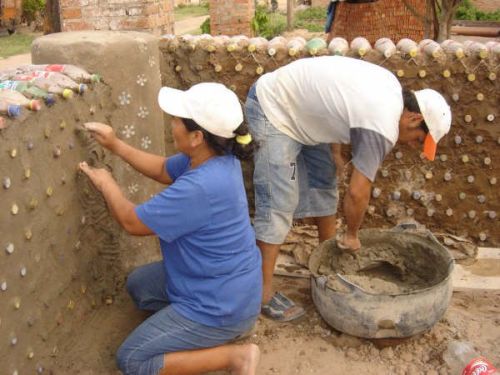Why is it so important that we focus on cities in talking about 21st century technology challenges? There are 3 reasons:
- Demographics
- Economics
- Revolution
Demographics – As we stated in Part One on urban landscapes, more than half of us now live in cities.
Economics – The top 100 cities of the world produce nearly 25% of the wealth of the planet and that percentage will grow in the 21st century.
Revolution – The urban poor are the seeds of angry change. Look at the Arab Spring of 2011. Areas of unrest in the Developing World largely come from within cities — the slums of Cairo, the young and underemployed urban poor of Bahrain, Syria, Iraq, Pakistan, Tunis, Benghazi, Tripoli and Algiers. Urban slums are the seed beds of revolution.
The Challenges
Cities of the Developed World and Developing World face some of the same and some different challenges in the 21st century.
What are the common challenges?
- Affordable housing for the urban poor
- Education and employment
- Pollution and waste management
- Transportation
- Energy
- Clean water
- Food supply
Affordable Housing
New types of housing options are being tested in countries like Cuba and Venezuela. These innovative examples (see previous blog) represent exceptions and not the rule.
Makoko, Nigeria, is the rule, an urban slum consisting of shacks overlooking sewage-laden creeks and rivers on the edge of Lagos’ downtown. Nigeria’s urban population has grown from 7% in 1930 to more than 40% in 2012. The majority, almost 75% live in urban slums like Makoko. In 2004 the Government of Nigeria established a plan to provide for 8 million new homes to meet existing and future needs of its population, 5 million in cities and 3 million in rural areas. Nigeria has struggled throughout its post-colonial period in achieving any of its plans related to housing. Many projects originally designated for the urban poor have ended up in the hands of those who are far richer and who have used the houses built as income properties.
In addressing housing for the urban poor Nigeria is looking at a number of solutions. One involves using recycled plastic bottles as building material. DARE is the Development Association for Renewable Energies. Using concepts pioneered by Eco-Tec Soluciones Ambientales, Nigeria is training local construction companies to build housing that uses recycled plastic bottles as construction material.

Each Eco-Tec bottle house uses disposable plastic bottles and other “junk” turning waste into building materials. The houses are solar-powered and equipped with clean-fuel cooking stoves, wastewater filtration and composting systems, and water purification tanks.
With millions of plastic bottles thrown into rivers, streams, littering roadsides, and disposed of in landfill and garbage dumps every year in Nigeria, repurposing what is essentially a non-biodegradable material for construction makes sense.
Plastic bottles for housing is not unique to Nigeria. South Africa and other Sub-Saharan African countries, and Central and South American countries are building housing and even schools made from recycled plastic.
Education and Employment
The majority of urban poor, 70% are under the age of 30. They represent the majority of unemployed in the Developing World. They are the majority of inhabitants in the shanty towns of urban slums. They are the principal participants in the informal economy that dominates these urban areas.
In a 2004 United Nations Habitat study, using Nigeria again as an example, indicated that 31% of youth between the ages of 15 and 24 were unemployed and not in school. Country-wide unemployed young women not-in-school stood at 36% with the number 2% higher in urban slums. Comparable male statistics were 26% and 23%. In non-slum environments the out-of-school and unemployed numbers were much lower. About 50% of young men living in Nigerian slums in school were not working. The corresponding number for women was 35%.
Nigeria is a good example of the crisis facing the urban poor in much of the Developing World. So many of the young who are poor face underemployment or unemployment. So many leave school without completing a secondary education.
In unemployed and uneducated youth the demographics and economics are combining to create revolution. There is a historic correlation with revolution and political violence when young people represent a significant share of the total population of a country or region . The French Revolution of 1789, the revolutions that swept Europe in 1848, the Russian Revolution in 1918, all were dominated by young people seeking employment, education and better living conditions. We see the elements that created Western revolutions in the Arab World in the Arab Spring of 2011. And we see it in civil unrest in Africa today. Poor countries experience civil conflicts when they have high percentages of young people lacking education and access to jobs.
In a paper published in June 2004, Richard Curtain, from the University of Canberra in Australia cited some statistics that showed, in countries with more than 40 per cent of the population between the ages of 15 and 29, the likelihood of civil unrest rises by a factor of 2.3. He further cited World Bank research indicating a greater occurrence of incidents of civil unrest in countries where 45% or less of young men had secondary school education.
So what can countries in Sub-Saharan Africa, like Nigeria, do to solve this problem of unemployment among youth? When we talk about the challenge of housing it is easy to see how the issue can be addressed. Find good designs, find materials, educate a workforce on the use of the materials, raise capital and build units. Unemployment and education programs are not too dissimilar.
The biggest obstacle to youth education and employment lies in the economy. Africa is undergoing its largest migration in history with the mass movement of people from rural to urban settings. When the population resided on farms, a family unit including children were all engaged in the business of subsistence agriculture. When the young with no training for jobs in an urban environment migrate to cities there is a lack of employment opportunity commensurate with the skills the new migrants have. It is hard to make a living as a fisherman in an urban setting.
As we discussed in our previous blog on the urban landscape, so much of the economy of urban slums is informal. Without education it is very difficult for young people to move out of informal, low wage or barter-paid employment within the urban slum. This perpetuates poverty.
Education represents the first step in breaking the poverty cycle. Educational programs oriented to entrepreneurship, that encourage young people to solve the environmental challenges they face, represent a way to increase employment or employability. So as in the case of housing, educators need to come up with good program ideas (design and materials), develop new curriculum that focuses on the skills of problem solving, invention, and that addresses the challenges of the 21st century through pilot projects that convert to permanent jobs, and provide both public and private investment in schools.
Young people should be enlisted to take part in coming up with solutions for their future. Projects like Sustainable Cities International, founded in Canada in 1993, engage government, industry, private citizens and youth in projects related to urban planning and design, waste, water, transportation, energy, disaster mitigation, poverty reduction, food, empowerment and governance.

We will continue addressing the challenges of the urban landscape listed above in our next installment of this blog.









[…] https://www.21stcentech.com/urban-landscapes-in-the-21st-century-part-2-the-evolution-of-cities/ […]
[…] Urban Landscapes in the 21st Century – Part 2: The Evolution of Cities. [online] Available at: https://www.21stcentech.com/urban-landscapes-in-the-21st-century-part-2-the-evolution-of-cities/ [Accessed 26 Sep. […]